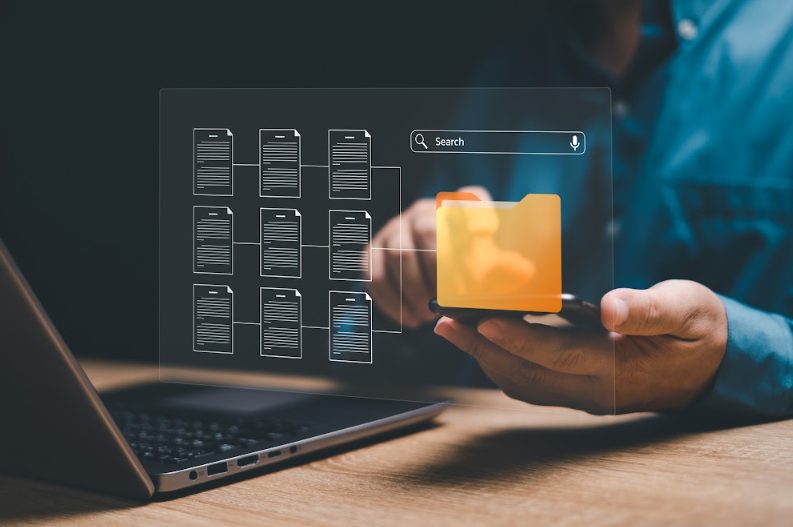Maintain File Integrity With These Tips
5 Mins Read
Published on: 02 June 2023
Last Updated on: 19 July 2024

- Unraveling Threats To File Integrity
- Essential Practices For File Creation And Storage
- Strategies For Effective File Backup
- Understanding The Magic Of Checksums
- Harnessing File Integrity Monitoring Tools
- Embracing Regular System Updates
- Upholding Security Measures For File Integrity
- Cultivating A Culture Of File Integrity
- Conclusion
Imagine working for hours, days, or even weeks on an important project.
You’ve invested your energy, creativity, and precious time into it. Now picture this: one day, you try to open the file containing your hard work, only to find it corrupted. Everything you’ve labored for is suddenly inaccessible. Unsettling, isn’t it?
That’s where the concept of file integrity comes into play—a topic often overlooked until disaster strikes. But what exactly is file integrity, and why should we bother about it? In essence, file integrity refers to the completeness and accuracy of a file.
It’s about ensuring that the contents of a file remain as they were originally intended, without any unauthorized or accidental alterations. In today’s digital world, where data is gold, maintaining file integrity is nothing short of a necessity—it’s the bedrock of trust and reliability in our systems.
As we delve into this blog post, we’ll highlight the various threats to file integrity and why they matter. We’ll explore the best file creation and storage practices, take a closer look at backup strategies, and introduce you to the magical world of checksums and file integrity monitoring tools. We’ll even discuss the role of regular system updates and security measures and how you can cultivate a culture of file integrity in your team.
Whether you’re a seasoned IT professional or just stepping into digital data, understanding and maintaining file integrity is essential in our increasingly digital age. So, let’s navigate this path together and fortify our files against the threats that lurk in the binary shadows.
Certainly, I’ll integrate your guidelines into the article.
Unraveling Threats To File Integrity
To maintain file integrity, it’s crucial to understand the threats that can compromise your files. File corruption can occur for various reasons, including hardware hiccups, software bugs, or cyber-attacks. It’s not always conspicuous and can strike when you’re unprepared. Losing valuable data can be a nightmare, halting your productivity and disturbing your workflow.
By unraveling the threats to file integrity, you can take proactive steps to protect your files and minimize the threat of data breaches and other security incidents. It includes implementing robust security measures, performing regular backups, and using file integrity monitoring tools.
Essential Practices For File Creation And Storage
Armed with awareness, you’re ready for defense. Good file creation and storage practices are your first shield. Commit to using standard file formats. They’re your ticket to compatibility and sustainability.
Moreover, they’re often easier to handle with tools like a Word to PDF Converter, which can increase file portability and security. Storing files redundantly is also a smart move. Redundancy is your safety net in case of sudden data loss. Don’t forget version control. It keeps a chronicle of changes and allows you to reverse the damage if corruption occurs.
Strategies For Effective File Backup
Effective file backup strategies are essential for maintaining file integrity. Losing all your data can be a nightmare, so regular backups are crucial. There are different types of backups, including full, incremental, and differential backups. Cloud storage is an excellent backup option, providing easy access and protection against physical damage or loss.
However, physical storage also has charm, especially for those who prefer a more traditional approach. Regardless of the method, performing regular backups is non-negotiable. Doing so can ensure that the files you own are not only safe but also secure, which eventually reduces the chances of data violations and other security incidents.
Understanding The Magic Of Checksums
Checksums are an essential tool for maintaining file integrity. Think of them as unique fingerprints for your files. When you create a checksum, you’re generating a code that represents the contents of your file. By comparing the checksum of a file before and after it’s transferred or modified, you can ensure that the file hasn’t been corrupted or tampered with.
This proactive method of validating file integrity can help catch issues before they cause significant damage. Using checksums, you can ensure your files remain secure and protected, reducing the possibilities of data breaches along with other incidents concerning security.
Harnessing File Integrity Monitoring Tools
Harnessing file integrity monitoring tools is an important step in maintaining file integrity. File Integrity Monitoring (FIM) tools act as vigilant guardians, actively monitoring and reporting changes to your files.
They play a crucial role in detecting unauthorized access, modifications, and other suspicious activity that could compromise the security of your files. Several FIM tools are available, but it’s important to choose the one you use correctly and consistently. Doing so can assure you that your files are secure and protected, which eventually mitigates data mishandling and breach risks.
Embracing Regular System Updates
Software updates may seem tedious, but they are essential for maintaining file integrity. Updates often come packed with security patches that protect your files from emerging threats.
If you’re not updating your software regularly, you’re leaving your files vulnerable to attacks. Hackers are always looking for ways to exploit vulnerabilities in outdated software, so staying up-to-date with the latest patches and updates is crucial. Doing so can make sure that your files remain secure and protected from all kinds of data threats.
Related: Declutter Your Mac From Duplicate Files Following Some Steps
Upholding Security Measures For File Integrity
Upholding security measures is crucial for maintaining file integrity. Investing in robust antivirus software and keeping your firewall sturdy to avoid unauthorized access and control of your files is important. Secure file transfer protocols are also essential to protect your files in transit.
These protocols act as armored vehicles for your files on the data highway, ensuring that they’re not intercepted or tampered with. By taking these steps, you can ensure your files are secure and protected, decreasing data misuse threats along with additional security incidents.
Cultivating A Culture Of File Integrity
Cultivating a culture of file integrity is crucial for any organization that values the security and privacy of its data. It’s not just the responsibility of one person, but rather a team effort. Regular training sessions can help keep everyone informed and aware of the importance of maintaining file integrity.
By creating a culture of security and integrity, employees are more likely to take ownership of their designation in protecting the organization’s data. It can help prevent data breaches and other security incidents that can be costly and damaging to the organization’s reputation.
Conclusion
Maintaining file integrity is crucial in today’s digital era. It requires vigilance, consistency, and continual learning. We can protect our files and secure our data by implementing robust security measures, performing regular backups, using file integrity monitoring tools, and understanding the threats to file integrity.
It’s essential to stay up-to-date with the latest security trends and best practices to ensure our files are both secure and protected. Integrity is non-negotiable, and by following this roadmap, we can ensure that our files remain protected and secure for years to come.
Read Also:


















Comments Are Closed For This Article